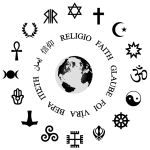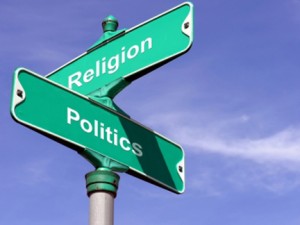Illusion in the Freudian Theory of Religion: Part Two
ILLUSION IN THE FREUDIAN THEORY OF RELIGION con’t…
Read Part One here.
Freud put forth some intriguing ideas about the origin, motivation and tenacity of religion. He has, however, been harshly criticized for his lack of validity, and some have suggested that he, himself, engaged in mythologizing and counter-narration of already established myths. A brief overview of the validity of his work in terms of its ‘historical’ accuracy and evidentiary value will demonstrate that much of his theories are based on unsubstantiated reconstructions of Biblical history and weak scientific inquiry. Despite these weaknesses, it will be suggested that the primary benefit of Freud’s theory doesn’t lie in its robust application, historical accuracy or scientism, but rather its use of illusion and fantasy as an explanatory mechanism of religious motivations.
In his critical appraisal of Freud’s theory, Michael Palmer suggested that there are three types of evidence that Freud provided in support of his hypotheses – anthropological, historical and psychological.[1] Indeed, several scholars and authors have criticized Freud for the lack of validity in the evidence he used to put forth his ideas. Using Palmer’s triad, a brief examination of these components will assist in ascertaining as to what extent Freud’s theory is rooted in the scientific paradigm of which he so staunchly advocated and to the veracity of his application of anthropological considerations.
From the overview of Freud’s work presented at the beginning of this paper, one of the anthropological foundations of his theory rests on the notion of a primal horde. This Darwinian idea allowed Freud to substantiate his Oedipal theory which would become his psychoanalytic basis for religion. While Darwin’s postulations are intriguing, it is important to point out that there is little valid data to support the universality of the primal horde. In fact, research has demonstrated a remarkable variation in the social organization of primates,[2] and while there is noticeable similarity between the social organization of some primates and that of very early man, the generalization of this observation in Freud’s account is highly misleading. Freud does not shy away from universal application of this sort, and this manifests as a blatant weakness in his theories. When examining the matrilineal family structure of some societies, the theory of primal hordes fails miserably. In these societies, the women provide authority and discipline for the clans.[3] This suggests a fundamental flaw in Freud’s attempt to apply such reductionist ideas to the highly dynamic nature of social structures and its various components, such as religion.
Paul Ricoeur, who has written extensively about Freud’s theories, suggested that, “…the truth is that the primal parricide is merely an event constructed out of ethnological scraps….”[4] Freud attempted to integrate his father complex (Oedipal) ideas with several observations taken from the social scientific realm in order to further validate his claim that the foundation of religion was rooted in supressed childhood wishes. The problem with Freud’s attempt isn’t the fact that he looked for evidence to support his claims, but rather that the evidence he used wasn’t as empirical or accurate as one might expect from scientific inquiry – an inquiry of which he not only advocated, but also suggested as the only valid truth, calling it, “…our only way to the knowledge of external reality.”[5]
Perhaps, this propensity for Freud to use lacklustre science in explaining cultural phenomenon was due to the fact that his main research method was generalizing from individual case studies to the entire human population.[6] It is little wonder that Freud employed this technique because the foundation of his practice of psychoanalysis was one of historical reconstruction through revealing the repressed past in an effort to understand one’s psychological problems in the present. Through the use of free association, in which the patient was walked through reconstructing their past, classical psychoanalysts provided interpretations of any sensitive memories which might suggest suppressed feelings, desires or struggles.[7]
It is undeniable that one of the most obvious weaknesses of Freud’s theory is the exclusion of matriarchal societies, which speaks to the lack of universality in extending his thesis beyond paternally dominated religions, particularly of monotheistic traditions. Interestingly, Freud acknowledged this as an issue by suggesting, “…I am at a loss to indicate the place of the great maternal deities….”[8]
Conceivably, the most controversial narrative Freud provided was the integration of his primal horde and totemism theories into a historical reconstruction of the biblical Moses. This re-imagining of the historical origins of monotheism provides little more than an unsubstantiated counter-narrative. Claims such as the name Moses meaning ‘child’ in Egyptian, or the fact that circumcision, which was widely practiced among Egyptian people[9] and adopted by the Jews, do not provide the evidence that Freud was desperately seeking. Similarly, we find dubious assertions in the claims that Moses was executed by the Israelites or that the monotheism of Amentohep IV actually had an influence on the development of Judaism. Instead, Freud appropriated these biblical myths and attempted to weave a narrative of the history of religious origins which seemed to fit his psychoanalytic theory of the origin of neuroses. His counter-narrative provided the link he required to justify his claim that religion was a neurosis of mankind. Freud did so by providing an original sin which was repressed and remained latent, followed by a return of the repressed manifested as guilt, culminating in the establishment of an illusion as a defence against the resurfacing of these repressed memories.[10] In the story of Moses, and subsequently the story of Jesus’ execution, Freud delivered a recurrence of the memories of the first primal scene that allowed him to apply his Oedipal theory to the origins of religion. In essence, it appears as though he has conveniently rewritten Biblical history in order to accommodate and advance his own psychoanalytic theories. Ironically, the very nature of Freud’s theory that religion is an illusion seems to be predicated on illusory bits of history and evidence itself.
Given that Freud applied certain psychoanalytic concepts to his theory of religion, it behooves a brief examination of the criticisms and commentary that have been expended on these notions. Many have suggested that Freud’s psychoanalysis lacked the fundamental requirements of scientific theory and empirical verification.[11] Particularly, critics have lambasted its use of subjective interpretation of dreams and memories,[12] in addition to its use of individual case studies which were generalized to the entire human population.[13] These points assuredly strengthen the arguments criticizing psychoanalysis as an unempirical and unverifiable science, yet some of Freud’s psychoanalytic concepts do show validity in follow up studies; however, it’s the application of these concepts in which Freud erred.
The heart of Freud’s postulations on religion is embedded in the Oedipal complex theory. Indeed, Freud, himself believed the Oedipal complex to be the single greatest claim to psychoanalytic fame.[14] Given this grandiose claim, it’s little wonder that there has been much research around verifying its importance or, indeed, existence as part of the development of the human psyche. Overall, research has demonstrated that there is evidence to support the existence of the Oedipal complex; however, there is little evidence to suggest that it can be generalized to all human beings, nor can it be claimed that it plays a central role in the development of mental processes.[15]
Wish fulfillment and repression are two other bases for the Freudian account of religious motivation. The concept of wish fulfillment has been largely drawn from his work on the interpretation of dreams, specifically their latent meaning.[16] As previously pointed out, the highly subjective nature of dream interpretation provides for an extremely weak methodology. Clearly then, it cannot be considered scientific as such. While we find little evidence to support the applicable robustness of either the Oedipal complex or wish fulfillment, the concept of repression as a defence mechanism has been widely recognized as verifiable.[17]
Finally, Freud adopted the concept of a collective unconscious or archaic memory heritage as the mechanism by which people acquired ideas and memories from their ancestors. Although these theories weren’t cornerstones to psychoanalysis, they do play an integral role in his theory of religion. Obviously, a concept of inherited memory is difficult if not impossible to test, and as such is highly unscientific.[18]
Ultimately, Freud’s psychoanalysis gravely lacks adequate application of the scientific model. His observations were drawn from unrecorded and recollected therapy sessions with his patients, and his concepts have, for the most part, remained untestable.[19] Thus, the bulk of Freud’s basis for his theory of religion is “…decidedly interpretative rather than empirical,”[20] because he based so much of this theory on his psychoanalytic model.
Freud clearly viewed himself as a scientist; however, he is more aptly viewed in the context of this paper as a culture theorist. Perhaps in part due to the reductionist nature of his scientific pursuits, his cultural theories have been widely regarded as attempts to advance his own psychoanalytic model. Additionally, his work has been accused of being piecemeal, limited in focus and the speculations of an aged man.[21] Given the aforementioned criticisms and inherent problems in his approach, is it possible to identify any worth in his theory of religion – other than merely part of the history of the psychology of religion?
Clearly, Freud’s use of psychoanalysis as a scientific explanation for the motivations and origins of religion is unfounded; however, his work is regarded as influential in the psychological study of religion because it helped advance discussion concerning the cognitive aspects of religion. Further, it drew analogies to the inherent need of people to feel safe and secure, which is arguably an intrinsic function of religion.[22] Ultimately, Freud’s theory of religion should not be regarded for its scientism, or for its rejection of religion as a meaningful element in human life. It is best interpreted as a tool for understanding the manifestation of symbol systems and the use of fantasy in positive personal and social development.[23] This stands in marked contrast to Freud’s assertion that religion functioned as a negative consequence of repressed wish fulfillments. Thus, Freud’s theory of religion can be linked to other cognitive developmental strategies involving fantasy and illusion such as creativity and imagination, which demonstrate a vital relationship between reality and the use of fantasy in the positive development of the human being.[24] Through re-assessing the Freudian critique of religion a new appreciation of his work as a rich account of how fantasy and illusion influence experiences of external reality can emerge.[25]
Freud may have insisted that religion has negative consequences for the individual, and indeed society, by keeping it stuck in a state of childlike dependence; however another view can be adopted – one that speaks to the unfettered power of illusion in its ability to help the human species to reconcile those aspects of life which are conceptually out of the human ability to understand.[26] Perhaps the strongest argument for this view of religion can be found in Freud’s own views on the relationship between man and nature, and the subsequent need, “…to defend us against nature.”[27] In this standpoint, we can draw parallels between the use of illusion and fantasy – or religious narratives – as a means to cope with the unknowable, volatile, and devastating events affecting human life. Beverley Clack aptly suggests, “[r]eligion offers solace in the face of chaos. It is this that connects religion most clearly with the concerns that drive the construction of phantasy: the attempt to limit pain and to master reality.”[28] Accordingly, religion becomes a mechanism, propelled through the use of illusion and fantasy, which serves to regulate feelings of mortality, helplessness, and uncertainty. The nature of the human species as self-aware inevitably leads to these postulations and the necessitation to mitigate the discontent that arises from these inherently emotional aspects of being human. In this manner, Freud’s belief that religion was illusion may be accurate; however, his view of religion as neurosis should be more accurately articulated as religion as a source of inspiration for the human species.
There is no denying Freud’s influence on our understanding of the human mind – in particular, his enormous influence on engaging future scholars in debate concerning the curiosities of the psyche and the role of human cognition in the creation of cultural systems. There is also little doubt that Freud rejected religion as a means in which to understand the world, although his motivations for doing so remain unclear. Further inquiry into Freud’s life would assuredly lead to many assumptions; however, this remains outside the scope of this paper. It also would fail to prove useful toward reconciling the argument herein. Certainly, he was a highly polemical figure who sparked discussion and much criticism; however, these criticisms have not been fully warranted. It behooves his critics to revisit his work for not its factual, empirical, or historical value – despite Freud attempting to conform to these standards – but rather for its interpretative value. This is where we find the true essence of the Freudian theory of religion. A theory which speaks to the depths of the human psyche and the fantasies employed to navigate through an often turbulent life. Through reassessing Freud’s critique, one might rightly suggest that he was indeed a friend of religion, albeit a hesitant one.
M. xo
Suggested Readings:
[1] Palmer, Freud and Jung, 61.
[2] Ibid., 62.
[3] Ibid, 65
[4] Paul Ricoeur, Freud and Philosophy: An Essay on Interpretation, trans. Denis Savage (New Haven: Yale University Press, 1970), 208.
[5] Freud, The Future of an Illusion, 55.
[6] Roderick Main, “Psychology of Religion: An Overview of its History and Current Status.” Religion Compass 2, no. 4 (2008): 715.
[7] David G. Myers, Psychology, 7th Edition in Modules (New York: Worth Publishers, 2004), 668-69.
[8] Freud, Totem and Taboo, 192.
[9] Ricoeur, Freud and Philosophy, 245.
[10] David Humbert,“The Return of Adam: Freud’s Myth of the Fall,” Religious Studies 29, no. 3 (Sep. 1993): 293.
[11] Robert Banks, “Religion as Projection: A Re-Appraisal of Freud’s Theory,” Religious Studies 9, no. 4 (1973): 412- 20; Palmer, Freud and Jung, 63-64; Ricouer, Freud and Philosophy, 345-75.
[12] Ricoeur, Freud and Philosophy, 346.
[13] Main, “Psychology of Religion,” 715.
[14] Banks, “Religion as Projection,” 413; Paul Kline, Fact and Fantasy in Freudian Theory (Edinburgh, GRB: T & A Constable Ltd, 1972), 348.
[15] Palmer, Freud and Jung, 64 – 65; Kline, Fact and Fantasy, 348.
[16] Banks, “Religion as Projection,” 414-15.
[17] Ibid., 413-14.
[18] Kline, Fact and Fantasy, 351.
[19] Ibid., 1-2.
[20] Main, “Psychology of Religion,” 715.
[21] Howard L. Kaye, “Was Freud a Medical Scientist or a Social Theorist? The Mysterious ‘Development of the Hero’,” Sociological Theory 21, no. 4 (2003): 378.
[22] Raymond F. Paloutzian, Invitation to the Psychology of Religion, 2nd Edition. (Needham Heights, MA: Allyn & Bacon, 1996), 47-48.
[23] DiCenso, “Totem and Taboo”, 561; James DiCenso, “Religion as Illusion: Reversing the Freudian Hermeneutic,” The Journal of Religion 71, no. 2 (1991): 178.
[24] Clack, “After Freud,” 204.
[25] Ibid., 210.
[26] DiCenso, “Religion as Illusion,”179.
[27] Freud, Future of an Illusion, 26.
[28] Clack, “After Freud,” 214.






